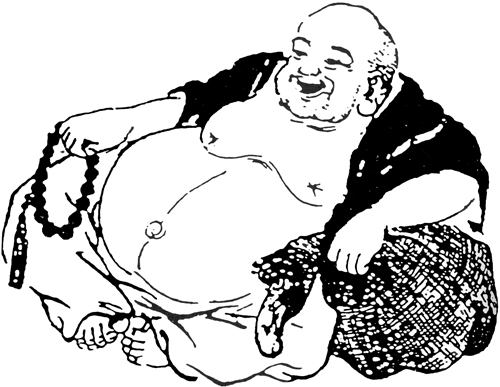In Soto Zen centers, there’s a verse we chant every morning between the dawn sitting and the morning service. The robe that symbolizes the commitment to the Buddha’s way is unfolded from its pouch and placed on top of our heads before we intone,
Vast is the robe of liberation
A formless field of benefaction
I wear the Tathagata teachings
Saving all sentient beings.
On many mornings, I indulged my initial amusement at the absurdity of people sitting on their cushions with bundles of cloth piled on their heads. So much of dislocated Japanese Zen ritual can provoke a wince, with its bloodless and robotic pretensions. By contrast, this seemed sweetly—even innocently—kind of silly.
Yet the verse took on a life of its own. It seeped into my internal byways with the gentle force of a slow rain. I repeated it all day. Or rather, it seemed to repeat itself rhythmically throughout the day, like the hum of the refrigerator, or the feral cats in heat outside, or traffic, or the addictive ditty of the ice cream truck that pulled up outside the zendo every afternoon. The phrase “formless field of benefaction” made me breathe deep, expand my chest, and raise my head. There was an inchoate sense that my own breathing had the capacity to energize and expand “the formless field.” I imagined a green field, daytime, sunlight, a field encapsulated in a kind of transparent bubble; with each deep breath, this bubble would grow until it contained many fields as well as oceans and lakes and animals and cities and fire engines, cell phones and saxophones. And sometimes I disappeared into this formless field of benefaction and moved in it and through it and with it in a magical dance of form and light in which there was no viewer, and the globe had no boundaries. The task of saving all sentient beings lost its insurmountable wonder; it suddenly seemed utterly sensible, even doable.
Vast is the robe of liberation. A formless field of benefaction. What a generous, comforting image—a robe as limitless as the sky, and at the same time a sense of being covered, held, embraced, protected. A natural, organic refuge, like a cave in winter snows.
But as my spiritual body expanded to include the world, my physical body, under its loose-fitting robes, expanded into a different kind of formless field, becoming a different kind of refuge. The practice of “dying on your cushion moment by moment” was met by a terrified ego that screamed No! You’re not going to kill me off! And to add extra insurance, as a wild animal might do at winter’s approach, I ate quickly and as much as I could. And so I stored up ego-fat, fat driven by the mind but housed in the body; fat to ward off the anxiety of letting go, of disappearing; fat to anchor me, to defend the self-cherishing delusions about myself against the Buddha’s invitation to investigate emptiness; fat to congeal, like cold grease, the fragments of the fabricated self; fat to disallow the ego-killing meltdown that my roshi encouraged in every talk he gave.
I once heard a story about a fat Zen teacher who was told by a student that “fat people can’t be enlightened.” The story was the butt of much hilarity at the student’s expense. After all, ours was the lineage of patriarchs who had taken the “mind only” teachings to their ultimate expression. Enlightenment was of the mind, by the mind, in the mind. True, this was the all-inclusive mind, the skylike mind without borders, the nondualistic mind.
And yet the sense persisted that the formless field of benefaction as a kind of mind-only, disembodied practice provided permission for the formless field that my own body had become. In fact, I seemed to disregard my physical embodiment altogether, its sensations dulled by layers of protection.
It wasn’t until I practiced vipassana that I learned to inhabit my body. In vipassana, physical sensation is the foundation of awareness, its every nuance to be noted, from the outbreath passing over my upper lip to the pain in my knee. My body was something I could no longer ignore. I realized that I had misused my Zen practice to avoid the discomfort of embodiment and all its attendant suffering.
My Zen practice feels much stronger now, after several years of vipassana meditation. It is grounded, and my body feels more alive, more sensitized to subtlety, more real. As for my fat—it comes and goes. With the help of vipassana, I can track the compulsion to eat.
Applying discipline and attention, I can respond in a deliberate and choiceful way. But there are months at a time when the moment to catch the impulse goes unheeded. Then mindlessness and greed rule the day, and the forces of ignorance have won out.
I am still wondering if fat people can be enlightened. I love to eat. If I could eat only for the sheer pleasure of eating—ice cream, sweets, French fries—by choice and deliberation, and with awareness and acknowledgment, then I could happily aspire to be one fat Buddha.
Thank you for subscribing to Tricycle! As a nonprofit, we depend on readers like you to keep Buddhist teachings and practices widely available.
